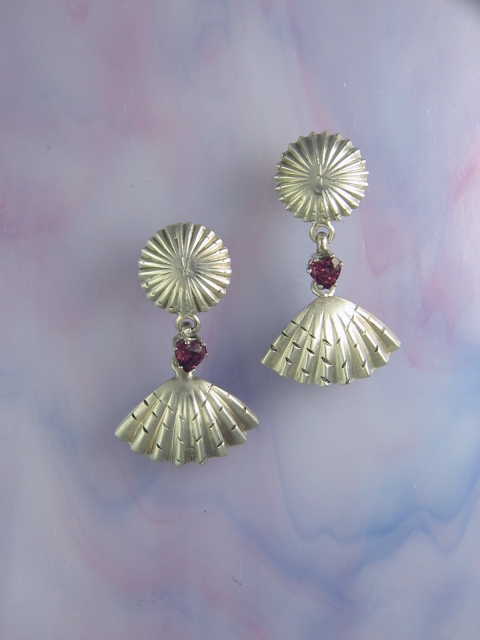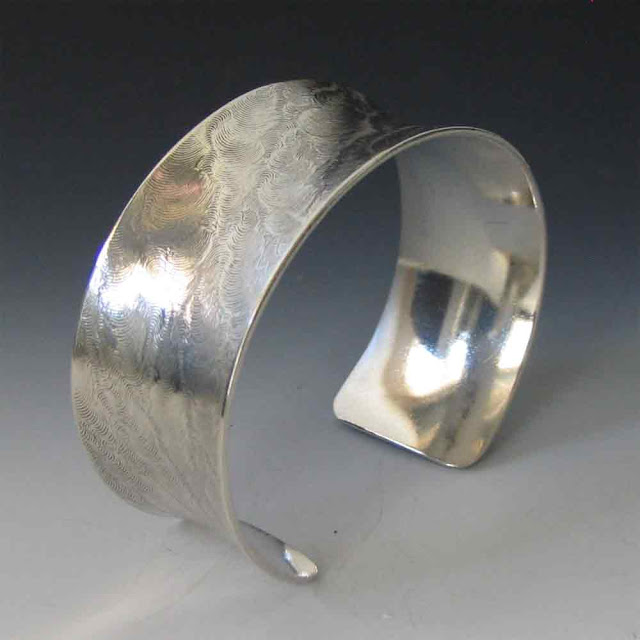Blog Archives
Repousse die forming
Posted by jazznjewelry
The conchas below are the typical round shape. The patterns are diamond cut.
Copyright 2011 by Katherine Palochak
Fold forming
Posted by jazznjewelry
Here’s a leaf pendant made in an Art Nouveau style.
This is a big leaf and a boat shape.
Copyright 2011 by Katherine Palochak
Great 3-D jewelry
Posted by jazznjewelry
For many years I’ve used several techniques to get jewelry that most people have never seen. Below are some example of sample forms made in copper and a fully developed form made into jewelry. Would you believe the top three forms began their lives as round disks?
Copyright 2011 by Katherine Palochak
Using handmade dies to make jewelry
Posted by jazznjewelry
Some of my work is made from dies that I cut. This allows me to get a 3-D form that’s lightweight. Here are some dies I’ve cut, along with copper samples.
Matrix dies
How they look finished
Made in silver.
Here is a pendant made from a handmade die. It is the amphora shape in the top photo, middle die.
What kind of jewelry do I make?
Posted by jazznjewelry
And some are just, “How did she do that? How does that work exactly?”
Copyright 2011 by Katherine Palochak


















